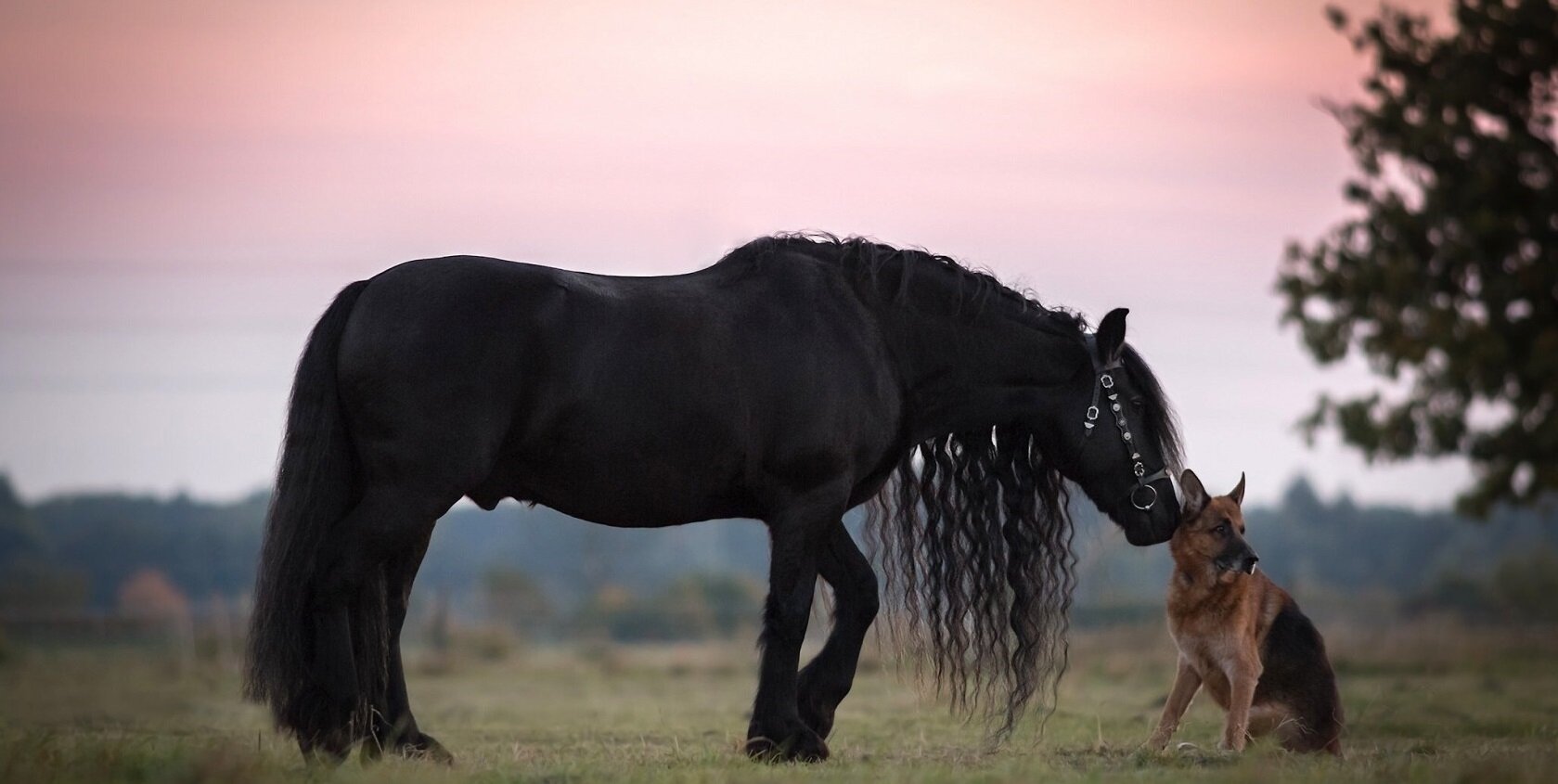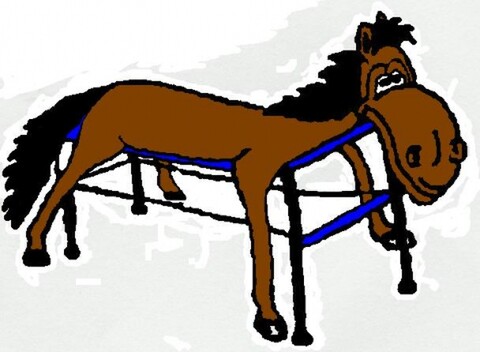Muscular aches, pains and stiffness impact on a horse's performance and his attitude. Caught early, they can be managed effectively. If undetected, muscle pain robs your horse of comfortable, free movement. Just think of how you feel if you've overdone it and have muscle pain or injury. It's not fun.
Signs of Muscle Pain
Muscle pain is a form of lameness, a problem that influences how the horse moves. A localized serious injury is fairly easy to detect if you look for it. The damaged muscle feels hard and now is tender to touch. When you examine the area, the horse will flinch and try to move away from you. The muscle may twitch. Depending on the location, there may be an obvious lameness.
Muscle pain may be more difficult to recognize in the horse that is "sore all over" from exercising longer or harder than he should have for the level of conditioning. The horse may be somewhat depressed, may be a little off feed, and may resent grooming, touch and saddling. Movement is stiff and stride length may be shortened. Instead of the gentle, rhythmic sway when riding, you'll feel a bit like the saddle is sitting on a fence line.
There are many variations on the theme with muscular pain. It may be present only in limited areas. The back is a common area, as are the pectorals in the chest, the hamstrings, the inner thigh muscles, quadriceps above the stifles, triceps of the upper front leg and also the neck.
Muscle Examination
Muscle strain or injury is an occupational hazard of any athlete, but protecting your horse's muscles begins with correct conditioning. Build duration and intensity of work gradually, vary the type of exercise, work equal times on both leads and diagonals. Allow as much turnout time as possible, so the horse has a chance to stretch, roll, bask in the sun and work the kinks out. Doing this can greatly decrease muscular pain and strain.
Your horse's reactions when being groomed are an important clue to areas of muscle pain. Skin twitching, flinching, ear pinning, tail swishing and kicking indicate sensitive areas. Examine the area with gradually increasing hand pressure (beware too much pressure will cause a horse to react regardless of pain). Normal muscles are pliable and, after an initial normal response to move away from pressure, the horse should relax, even lean into the pressure. Sore muscles will feel unusually hard and often spasm further with pressure. The horse will obviously resent it.
Pain may be localized to one area, involve the whole muscle belly, and even involve the areas where the muscle is attached to bone by the ligaments at either end.
Treatment
Severe injuries should be examined by your veterinarian, possibly ultrasounded and etc to determine the extent and nature of the injury. Otherwise, a qualified practitioner in muscle release can help greatly with addition of a treatment plan for gentle stretching exercises and turnout are the keys to handling muscle problems. Each treatment starts with a thorough visual
assessment of the horse and palpation tests to assess muscular, skeletal and nervous state of the horse. Also a thorough case history is taken and recorded for future reference.
The initial treatment is ideally given in a block of three sessions, with a week between the three treatments followed by a maintenance session at a later date depending on the individuals improvement.
AMRT is a Myo-fascial release & Acupuncture & Laser treatment in which a specific sequential series of moves will be performed over specific trigger points.
AMRT uses trigger points that stimulate the nervous system to release tension in the body, providing increasing muscle mobility, improving the flow of fluids such as lymph and blood, and stimulating the hormone system to rebalance and reduce stress.
If you feel your animal could benefit a AMRT session pls contact me via email: nash@animal-mrt.com or phone: 021 2654522

